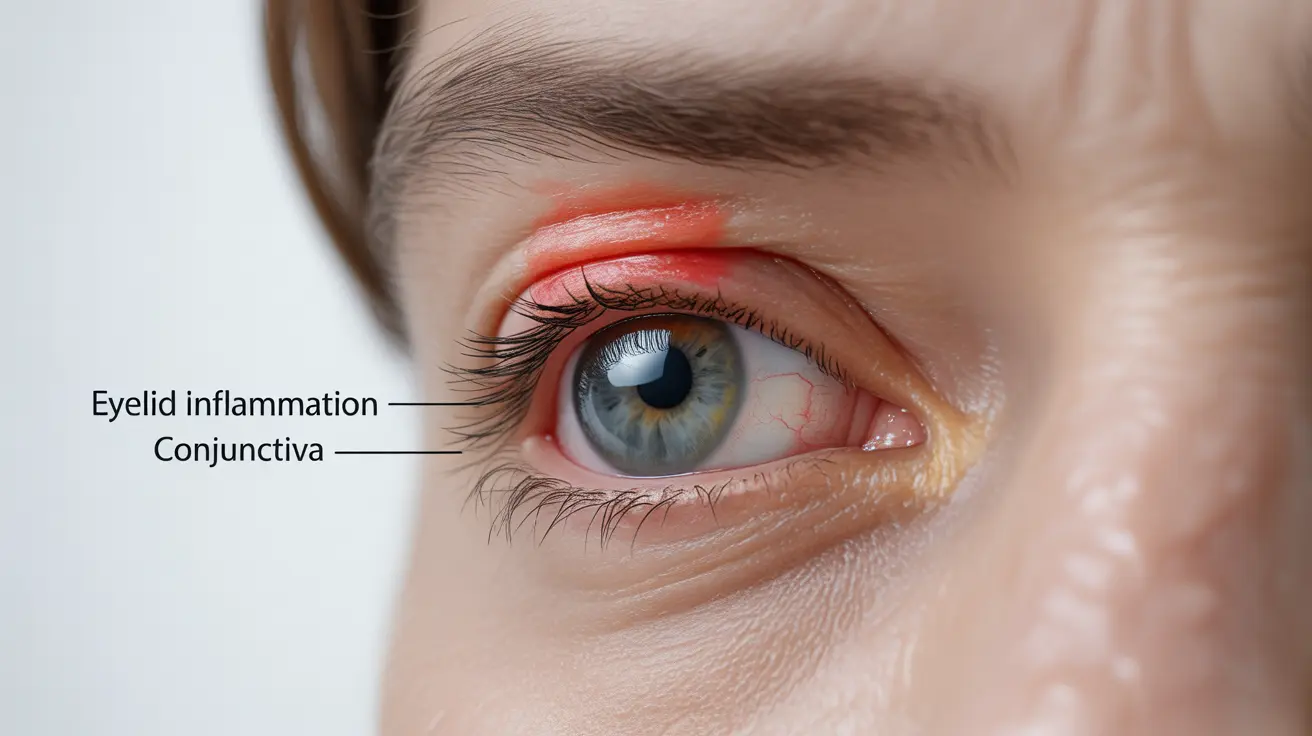Blepharoconjunctivitis is a complex eye condition that affects both the eyelids and the conjunctiva, the clear membrane covering the white part of the eye. This inflammatory condition can cause significant discomfort and requires proper medical attention for effective management.
Understanding this condition is crucial for anyone experiencing symptoms or caring for someone affected by it. This comprehensive guide will explore the causes, symptoms, diagnosis, and treatment options available for blepharoconjunctivitis.
Understanding Blepharoconjunctivitis
Blepharoconjunctivitis occurs when inflammation affects both the eyelids (blepharitis) and the conjunctiva (conjunctivitis) simultaneously. This dual inflammation can create a cycle of irritation that requires targeted treatment approaches to address both components effectively.
Common Signs and Symptoms
The condition typically presents with several characteristic symptoms:
- Red, swollen eyelids
- Burning or irritated eyes
- Crusty debris along the eyelashes
- Watery eyes
- Light sensitivity
- Gritty sensation in the eyes
- Blurred vision
Causes and Risk Factors
Several factors can contribute to the development of blepharoconjunctivitis:
- Bacterial overgrowth on the eyelids
- Dysfunction of the meibomian glands
- Allergic reactions
- Skin conditions like seborrheic dermatitis
- Poor eyelid hygiene
- Contact lens wear
Diagnosis Process
Eye care professionals use several methods to diagnose blepharoconjunctivitis:
Physical Examination
The doctor will carefully examine the eyelids and conjunctiva using a specialized microscope called a slit lamp. This allows for detailed observation of inflammation patterns and any structural changes.
Diagnostic Tests
Additional tests may include bacterial cultures, tear film evaluation, and assessment of oil gland function to determine the underlying causes and guide treatment decisions.
Treatment Approaches
Treatment for blepharoconjunctivitis typically involves a multi-faceted approach:
Medications
- Antibiotic eye drops or ointments
- Anti-inflammatory medications
- Artificial tears for lubrication
- Specialized eyelid cleansers
Eyelid Hygiene Practices
Maintaining proper eyelid hygiene is crucial for managing symptoms and preventing recurrence:
- Warm compresses to soften debris
- Gentle eyelid massage
- Regular cleaning with prescribed solutions
- Proper removal of eye makeup
Prevention Strategies
Several preventive measures can help reduce the risk of flare-ups:
- Regular eyelid cleaning routine
- Proper hand hygiene
- Avoiding eye rubbing
- Regular replacement of eye care products
- Managing underlying conditions
Long-term Management
Successfully managing blepharoconjunctivitis often requires ongoing attention and care. Working closely with an eye care professional to develop a personalized management plan is essential for optimal outcomes.
Frequently Asked Questions
What are the common causes and symptoms of blepharoconjunctivitis? Common causes include bacterial infection, meibomian gland dysfunction, and poor eyelid hygiene. Symptoms typically include red, swollen eyelids, eye irritation, crusty debris on eyelashes, and blurred vision.
How is blepharoconjunctivitis diagnosed by eye care professionals? Eye care professionals diagnose the condition through detailed examination using a slit lamp microscope, evaluation of symptoms, and possibly additional tests like bacterial cultures and tear film analysis.
What treatments are available to relieve blepharoconjunctivitis and prevent recurrence? Treatment options include antibiotic medications, anti-inflammatory drugs, artificial tears, and specialized eyelid cleansers. A consistent eyelid hygiene routine is also essential for prevention.
How can eyelid hygiene help manage and prevent blepharoconjunctivitis? Regular eyelid hygiene, including warm compresses, gentle cleaning with prescribed solutions, and proper eyelid massage, helps remove debris, reduce inflammation, and prevent symptom recurrence.
What complications can arise if blepharoconjunctivitis is left untreated? If left untreated, blepharoconjunctivitis can lead to chronic eye inflammation, corneal damage, scarring of the eyelids, and persistent vision problems. Early intervention is crucial for preventing these complications.




